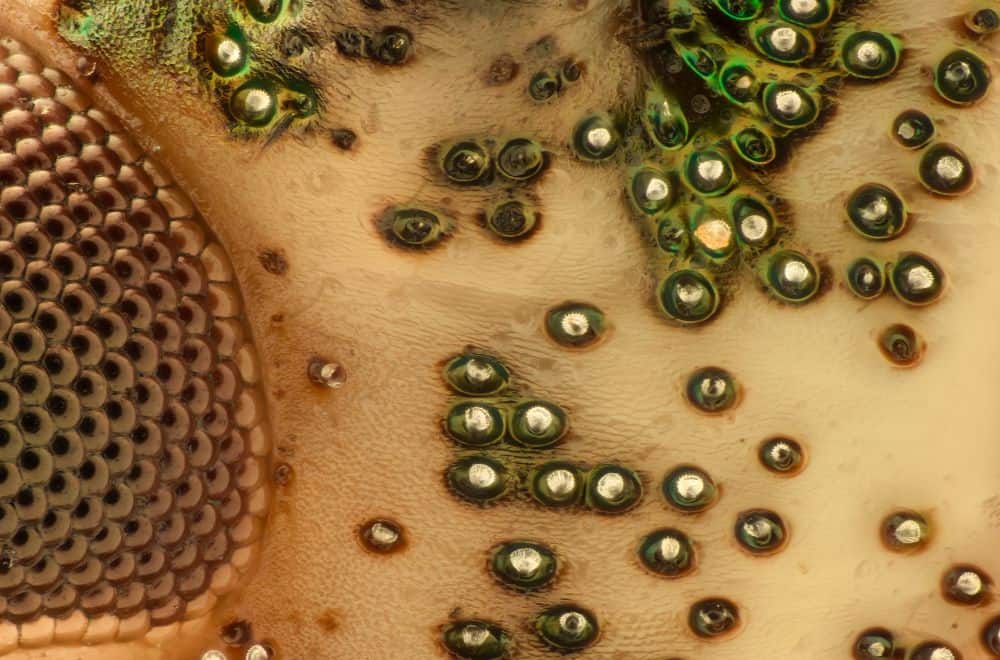One of the creepiest experiences in the world is being by things you can’t see. These include microscopic bugs that bite. You can feel them crawling on your skin, flinching, and squeaking when they sink their teeth in. But when you look, there’s nothing there! Today, we’ll explore some of these seemingly invisible bugs, what they are, and how to stop them.
Microscopic Bugs That Bite
1. Scabies Mites
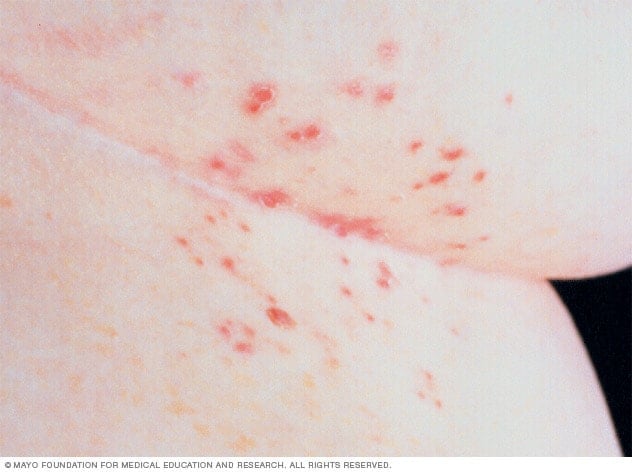
Image Credit: mayoclinic
Some bugs have keen camouflage skills so you might think they’re microscopic. They might look like dots, dust, or webbing. Others are so well-hidden that you only see their eggs, poop, or bloodstains after feeding. But truly microscopic bugs can only be seen under microscopes.
Mites are a good example, and millions of species exist. Let’s start with scabies mites. These tiny brown bugs have eight legs and their scientific name is Sarcoptes Scabiei. They dig into your skin to lay eggs, leaving itchy blister-like bumps on your skin. They’re quite contagious.
When you look at the rash under a microscope, you’ll see the meandering tunnels created by the scabies mites. Pills and creams can kill scabies mites, but since the tunnels will stay open for a while, you may still scratch the rash for several weeks after all the mites are gone. Sorry!
2. Chiggers
First off, despite the similarity in spelling (and the potential mix-up from regional accents), a chigger is not the same as a jigger. Jiggers are fleas that burrow into your feet and cause large painful sores. Conversely, chiggers are microscopic mites closely related to ticks and spiders.
These red mites lay eggs that cling to clothing. When they hatch, the larvae secrete digestive enzymes onto your skin. These proteins will kill skin cells which the larvae will then eat. The chemical makes the dead skin coil into a straw so the larvae can drink the dead liquified cells.
As the larvae grow into an adult, your skin gets pretty itchy. Scratching dislodges the adult mite which then falls over your skin, mates, lays eggs, rinse, and repeat. Meanwhile, you’ll notice pimples and rashes at the chigger site. Antihistamines and anti-parasite meds will help.
3. Head Lice
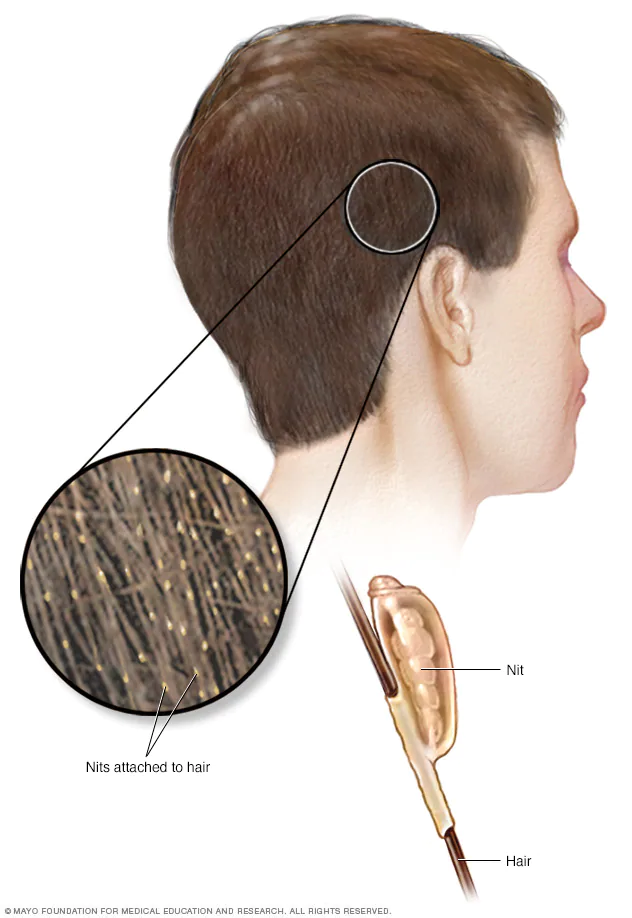
Image Credit: mayoclinic
A lot of people are afraid of head lice. But while they’re extremely contagious, they’re not that dangerous. And unlike other lice, head lice have nothing to do with hygiene. They spread via shared headgear and accessories, so they can attack even if you wash your hair every day!
Also, unlike other lice, head lice don’t cause or spread any diseases. They make your hair itch so you might develop sores and bald patches, but you won’t break the skin so you won’t get sick. The solution is to use a fine-toothed flea comb or nit comb to sift them out of your hair.
You can also add olive oil to loosen the head lice. Careful shampooing and combing will get rid of head lice in a few weeks, but you can also use medicated lotions like permethrin, malathion, or benzyl alcohol. These go by brand names like Nix, Ulesfia, Lindane, and Ovide.
4. Body Lice
Lice never cross body parts or species. Meaning head lice can’t bite your body, and dog lice don’t bite humans. This is because lice have hook-like claws that latch onto the skin or hair of their target. And every louse adapts its claws to the type and texture of hair that they prefer.
Bird lice, for example, can only cling to feathers. And body lice feed on human blood but they don’t live on your body. Instead, they mate and lay eggs on your clothes or bedding and only jump onto your skin when they’re hungry. You’re essentially their kitchen or dining table.
While head lice can infest clean hair, body lice can be destroyed by soap, so they only infest people who wear dirty clothes or can’t take regular baths. These lice carry bacteria that can spread diseases like typhus. Wash fabrics with hot water and use pediculicides to kill them.
5. Pubic Lice aka Crabs
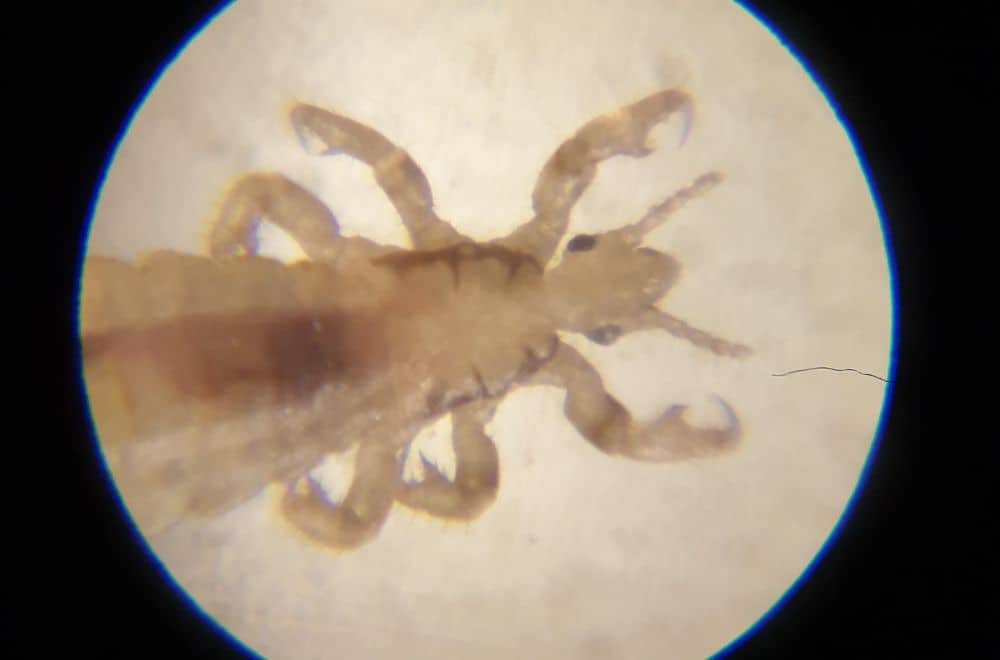
Image Credit: mayoclinic
You might know that crabs – the type that attack humans – are sexually transmitted. But did you know they were lice? They’re microscopic bugs that bite pubic regions by latching the coarse hair on your armpits, pubic hair, and facial hair (beards, eyebrows, eyelashes, etc.).
They might also spread to hairy arms, legs, backs, and chests. They get their name because, under the microscope, they look a lot like marine crabs. Crab lice are quite itchy, so they can cause sores. These sores can develop into open wounds which trigger secondary infections.
How? Well, they’re highly contagious and often accompany and spread other STDs and STIs. The bacteria and viruses from these diseases might seep into the wounds. Resolve the issue with shampoos and OTC (over-the-counter) creams containing Malathion and Ivermectin.
6. Yellow Thrips
Adult thrips are usually brown but their babies are yellow. And unlike other insects that go through the egg-larvae-pupa transition, thrips hatch into mini-me thrips that are simply a different color. They usually eat plants but can bite people if they get too dehydrated.
When yellow thrips aka thunder bugs bite you, they’re looking for moisture from your sweat or sebum. They might also get into wet clothes for the same reason. They’ll mostly bite bare feet if you walk through their feeding area, and while they’re annoying, the bites aren’t toxic.
They’ll ruin your plants though, so you still need to get rid of them. Some people call them thunder bugs because they pop up before thunderstorms. Other nicknames include Chilli, Tea, or Strawberry Thrips. Try using predatory bugs and biorational sprays to control them.
7. Dust Mites
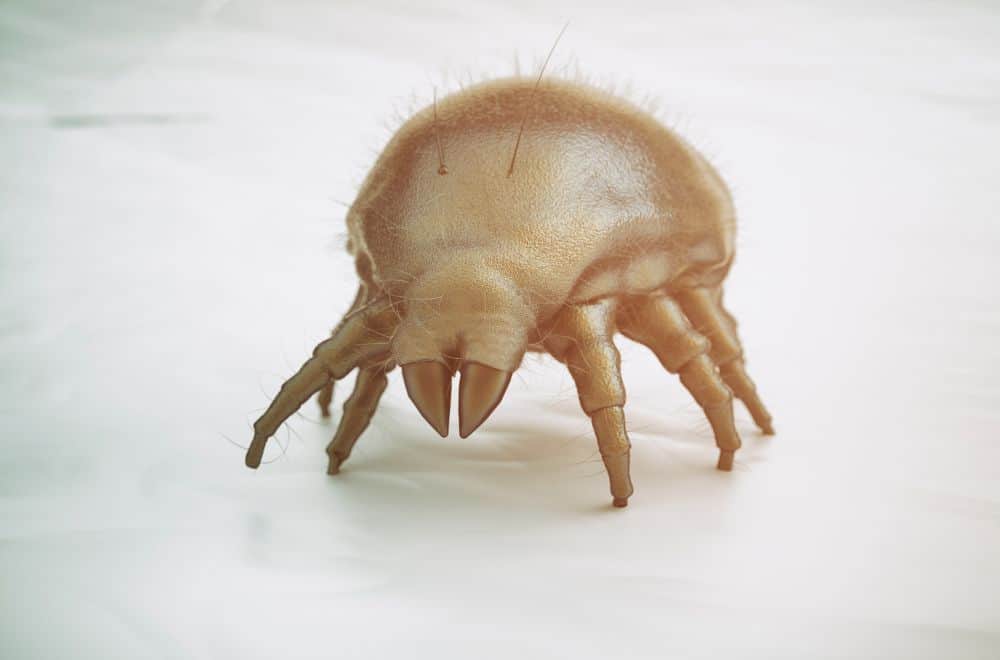
Image Credit: mayoclinic
Most mites are microscopic so when you glance at them with your naked eye, you’ll assume they’re bits of dust. Until they start moving! Dust mites can be even more confusing because they live in – and feed on – dust. It’s how they got their name. And yes, they do bite people.
Dust is made of all sorts of things, from pollen and ash to bacteria and microscopic bugs that bite. And the favorite dish of dust mites is dead human skin. Their bites aren’t that painful since they mostly target the dead cells that are already sloughing off the surface of your body.
Their main threat is triggering allergies in your respiratory system, so they can cause swollen sinuses, runny noses, itchy eyes, throat congestion, coughing, sneezing, and asthma attacks. Use antihistamines for allergies, get a vacuum with a HEPA filter and install a dehumidifier.
8. Bird Mites
Bird mites have a lot in common with bird lice. Both are arachnids, meaning they have a distinct head, abdomen, and eight legs. But unlike spiders, they don’t scuttle or spin webs to trap flies. Instead, they cling to the skin and feathers of birds and resemble tiny dark dust.
These are microscopic bugs that bite birds to suck their blood. They’re not interested in us because their claws can’t grasp our hair follicles, but they can bite as if we handle birds that they’ve infested. And if we’re keeping poultry as pets, for eggs, or for meat, mites are trouble.
They can make the birds sick, spreading diseases and eventually killing them. Unless the bird is a pet, keep it out of the house to prevent its mites from attacking your family. Otherwise, use bird-safe pesticides in your coops, cages, and nesting areas to eliminate bird mites.
9. Straw Itch Mites
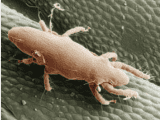
Image Credit: agric.wa
We often say ‘bug’ when we mean ‘insect’ and vice versa. But insects are a specific scientific category that has six legs, antennae, and three body parts i.e. the head, thorax (chest), and abdomen (stomach). On the other hand, bugs can include worms, arachnids, and mollusks.
Mites, for example, are arachnids that have eight and two body parts i.e. head and abdomen. And tiny crabs like pea crabs and sand crabs have ten legs, but they might be lumped with other seaside bugs. For now, let’s talk about straw itch mites which are only 0.2mm in size.
They mostly attack grains and hay bales where they feed on the larvae of food pests. They appear as fine dust in your foodstuffs, and they can bite people who handle these cereals and grasses. You can kill them by either drying their targets in the oven or freezing your produce.
10. Rat Mites
Although white lab rats (and Ratatouille) do a lot for #RodentPR, the average person doesn’t want those long-tailed furries running around the house. They seem creepy, trigger primal reactions, and can make the cleanest space seem filthy. But they cause another issue as well.
Rats can spread fevers and viral diseases, but they can also host microscopic bugs that bite e.g. rat mites. These arachnids see rat blood as true gourmet, but if you successfully get rid of the rats, the hungry mites will make do with human blood instead. And they travel quite far!
Rat mites can go up to six weeks without food, so after you’ve sent all the rats packing, you may need an extra dose of pesticide to get rid of residual rat mites. Ivermectin will kill any mites that are living on rat bodies but spray the nesting area to destroy microscopic refuges.
11. Demodex Mites
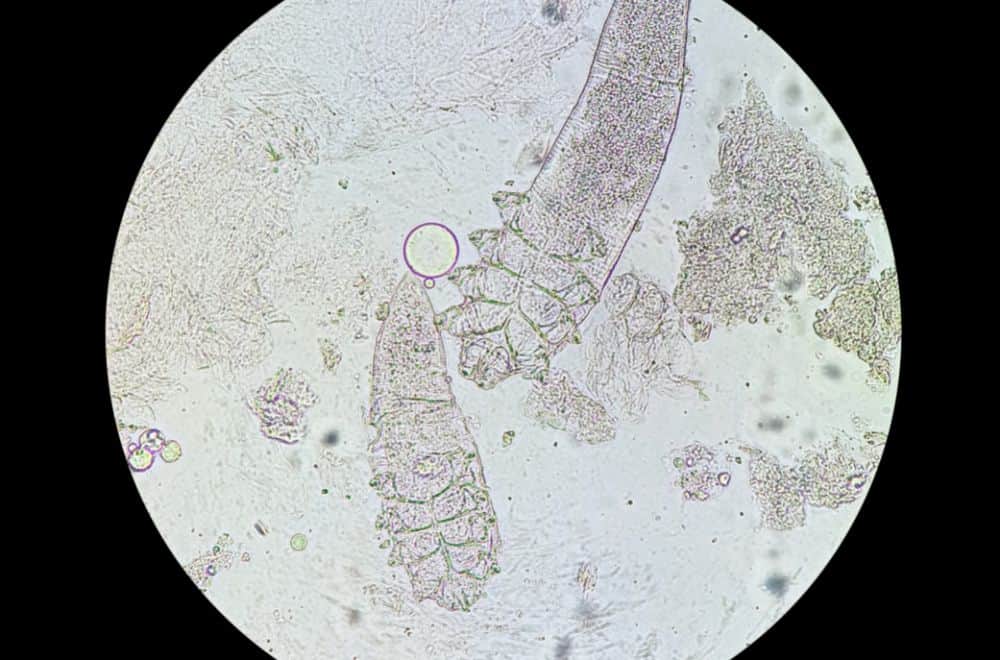
Image Credit: my.clevelandclinic
So far, we’ve seen a lot of microscopic mites that target other animals, making us collateral damage. But while over sixty species of Demodex mites have been recorded, two primarily feed on human blood. We call them eyelash, face, or skin mites and they live on our follicles.
Usually, these mites are harmless. They sleep during the day then come out to eat and mate at night. Everyone has a specific strain of them, so they’re almost like DNA or fingerprints and can tell us a lot about our history and health. But if they over-multiply, it’s a problem.
When these face mites saturate our skin, we get itchy rashes, breakouts, scaly eczema, and sometimes the skin feels like it’s burning or tingling. Eyelash mites can dim your eyesight as well. You can use an alcohol-based lotion or cleanser to get the mites back under control.
12. Green Lacewing Larvae
Green lacewings are as pretty as they sound. They’re adorably delicate insects that have fine lacy wings. But it’s not the adult that’s the problem – it’s the larvae. This caterpillar mostly eats other insects, so it can be helpful to humans. But it does occasionally bite people as well!
It won’t hurt you or break the skin, but it can be annoying and will cause a mild, itchy rash. A bit of ice, some alcohol wipes, or a soothing disinfectant lotion will solve the problem. Avoid scratching the bite since that can cause a wound that may get infected with a secondary bug.
Because green lacewing larvae exclusively eat soft-bodied plant pests like aphids, you may not want to destroy them. Adult lacewings eat bugs too, but they prefer nectar, honeydew, and pollen. Instead, move them to an area infested with other pests and just let them work!
13. Mold Mites
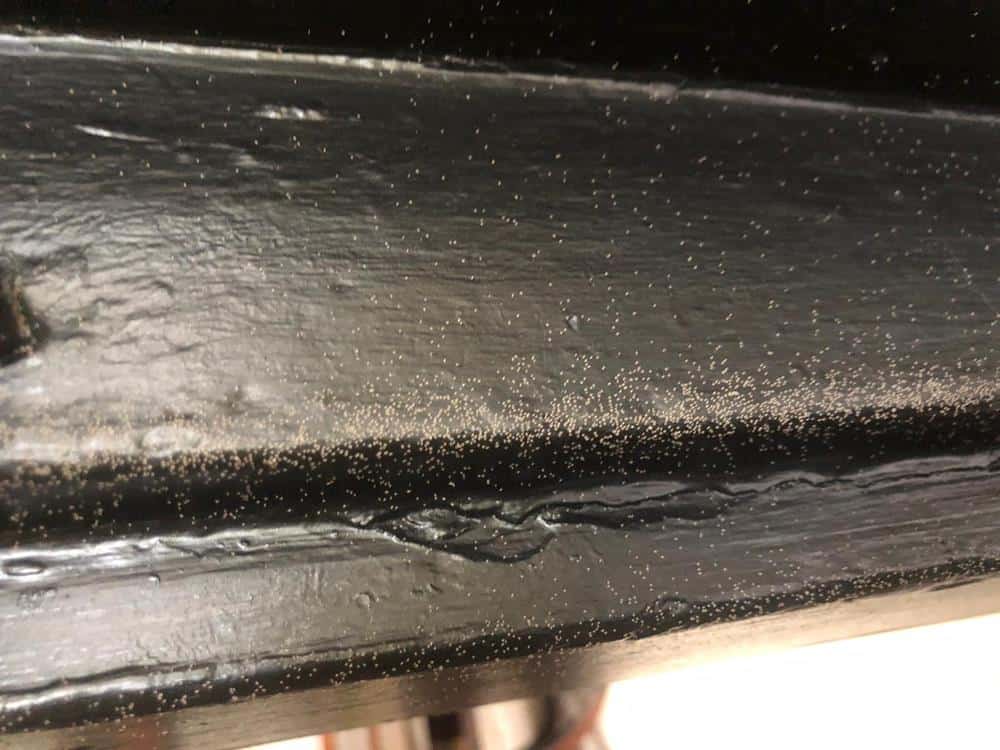
Image Credit: eradipest
Mould develops in any part of your house that’s dark and damp. It’s most common in the bathroom or under the kitchen sink, but you can also find it near gaps at the door, loose window panes, or leaky gutters. You’ll also find mold on rotting fruit or wet food items.
Once the mold piles up, it will attract mold mites to snack on it. Mold is usually dark and sometimes fuzzy, and mold mites look like white dust speckled on top of the mold. Except that this dust moves, and can increase at alarming rates! But do mold mites bite humans?
Technically, no. If you’re allergic, you might notice an itchy rash that resembles an insect bite, but that’s just your immune system responding to contamination. The best way to get rid of mold mites is to remove the mold with bleach or vinegar and prevent further leaks.
Did we forget any microscopic bugs that bite? Remind us in the comments section below.
